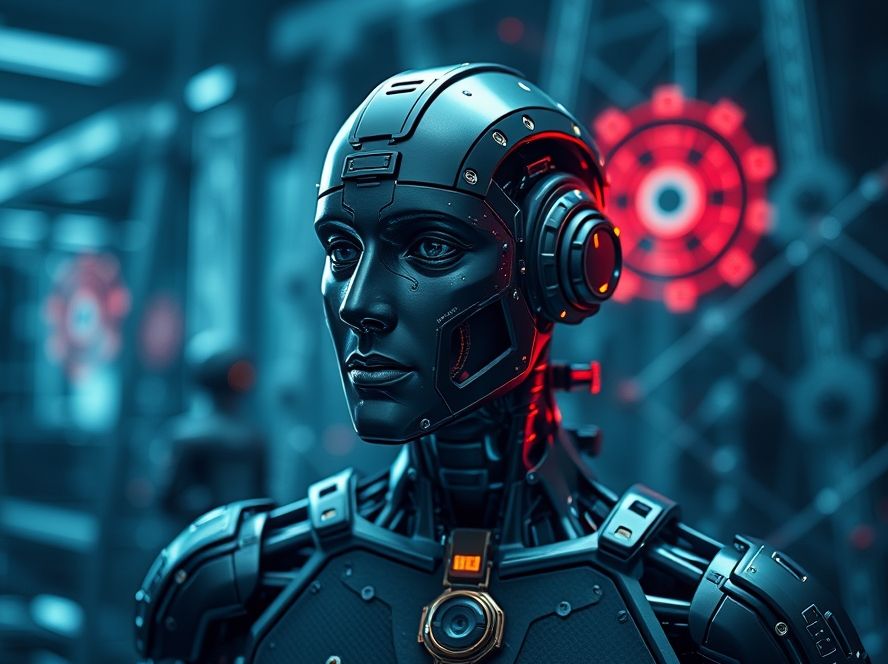Understanding GANs: A Comprehensive Overview
Generative Adversarial Networks, commonly known as GANs, are a groundbreaking class of machine learning frameworks designed for generating new data instances that resemble a given dataset. Introduced by Ian Goodfellow and his colleagues in 2014, GANs have revolutionized the field of artificial intelligence, particularly in the domains of image generation, video generation, and voice synthesis.
The Structure of GANs
At the core of GANs are two neural networks: the generator and the discriminator. These two networks engage in a game-theoretic scenario, where:
- The generator creates fake data instances.
- The discriminator evaluates them against real data.
This adversarial process continues until the generator produces data that is indistinguishable from real samples, effectively fooling the discriminator.
Key Applications of GANs
GANs have found numerous applications across various sectors. Here are some notable examples:
- Image Generation: GANs are widely used in creating realistic images. For instance, NVIDIA’s StyleGAN can generate high-resolution images of human faces that do not exist in reality.
- Video Generation: GANs can also be applied in generating video sequences. This is particularly useful in the entertainment industry for creating animations or effects.
- Data Augmentation: In fields like healthcare, GANs can generate synthetic medical images to augment training datasets, improving the performance of diagnostic models.
- Art and Creativity: Artists and designers are using GANs to create unique artworks, blending traditional techniques with cutting-edge technology.
How GANs Work: A Deep Dive
To understand how GANs function, it’s essential to grasp the intricacies of their training process:
- The generator receives random noise as input and produces data instances.
- The discriminator assesses both real and generated data, outputting a probability indicating whether the data is real or fake.
- Both networks are trained simultaneously; the generator aims to improve its output to trick the discriminator, while the discriminator strives to become better at distinguishing fake from real.
This iterative process creates a feedback loop, enhancing the generator’s ability to create high-quality data over time.
Practical Applications of GANs in Daily Life
Understanding how to implement GANs can be beneficial for professionals and enthusiasts alike. Here’s how you can start:
- Getting Started with GANs: Utilize platforms like TensorFlow or PyTorch, which provide robust libraries for building GAN models.
- Experimentation: Begin with simple projects, such as generating handwritten digits using the MNIST dataset, to familiarize yourself with GAN architecture.
- Creative Projects: Explore creative uses of GANs by collaborating with artists or using GANs to generate music or poetry.
By diving into these projects, you can not only enhance your skills but also contribute to innovative applications of GAN technology.
Related Concepts: The Broader Context of GANs
GANs are part of a larger ecosystem of machine learning concepts. Here are some related terms that help contextualize their significance:
- Deep Learning: A subset of machine learning that uses neural networks with many layers.
- Neural Networks: Computational models inspired by the human brain, which are the building blocks of GANs.
- Reinforcement Learning: A type of machine learning where an agent learns by interacting with its environment, which can complement GAN training.
Conclusion: The Future of GANs
GANs represent a significant advancement in the field of artificial intelligence, offering powerful tools for data generation and manipulation. Their applications are vast and varied, providing exciting opportunities for innovation across industries. As technology evolves, understanding and leveraging GANs will become increasingly essential for professionals and enthusiasts alike.
Consider exploring GANs further to unlock their potential in your projects, whether in art, technology, or data science. The future is bright for those who embrace this transformative technology!









